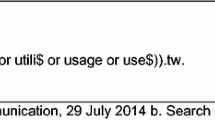Abstract
For several decades, the incremental cost-effectiveness ratio has been routinely used by health technology assessment agencies around the world to summarise the results of economic evaluations of health interventions. Yet reporting and considering incremental cost-effectiveness ratios is unnecessary. Alternative summary measures exist, based on the concept of ‘net benefit’. The incremental cost-effectiveness ratio and measures of net benefit share several commonalities but some important distinctions. As a result, different methods are required to calculate and interpret incremental cost-effectiveness ratios compared to measures of net benefit. The aim of this practical application is to introduce readers to these methods, using a hypothetical example to illustrate key issues. First, the methods used to calculate each measure are described. Next, for each measure, consideration is made of whether and how each measure may be interpreted to perform the following tasks, each of which may be of interest to health technology assessment agencies: (1) identifying the single most cost-effective strategy; (2) ranking strategies from ‘most’ to ‘least’ cost-effective (on an ordinal scale); (3) determining the magnitude to which a strategy is more or less cost-effective than another strategy (on a cardinal scale); and (4) determining whether a strategy is more or less cost-effective following a sensitivity or scenario analysis. This practical application also introduces a novel approach for visually interpreting measures of net benefit using the cost-effectiveness plane, which addresses a number of limitations of the conventional cost-effectiveness ‘efficiency frontier’. By the end of this practical application, readers should have an understanding of how to calculate and interpret each measure, as well as the relative strengths and limitations of each.













Similar content being viewed by others
Change history
19 August 2020
The original article can be found online.
References
Weinstein M, Zeckhauser R. Critical ratios and efficient allocation. J Public Econ. 1973;2:147–57.
Karlsson G, Johannesson M. The decision rules of cost-effectiveness analysis. Pharmacoeconomics. 1996;9:113–20.
Weinstein MC. Principles of cost-effective resource allocation in health care organizations. Int J Technol Assess Health Care. 1990;6:93–103.
Canadian Agency for Drugs and Technologies in Health (CADTH). Guidelines for the economic evaluation of health technologies: Canada. 4th Edition. 2017. https://www.cadth.ca/sites/default/files/pdf/guidelines_for_the_economic_evaluation_of_health_technologies_canada_4th_ed.pdf. Accessed 19 Apr 2020
National Institute for Health and Care Excellence (NICE). Guide to the methods of technology appraisal 2013. 2013. https://www.nice.org.uk/process/pmg9/. Accessed 19 Apr 2020
Pharmaceutical Benefits Advisory Committee (PBAC). Guidelines for preparing a submission to the Pharmaceutical Benefits Advisory Committee. Version 5.0. 2016. https://pbac.pbs.gov.au/content/information/files/pbac-guidelines-version-5.pdf. Accessed 19 Apr 2020
Stinnett AA, Mullahy J. Net health benefits: a new framework for the analysis of uncertainty in cost-effectiveness analysis. Med Decis Making. 1998;18:S68–80.
Craig BA, Black MA. Incremental cost-effectiveness ratio and incremental net-health benefit: two sides of the same coin. Expert Rev Pharmacoecon Outcomes Res. 2001;1:37–46.
Pandey H, Paulden M, McCabe C. Theoretical models of the cost-effectiveness threshold, value assessment, and health care system sustainability. Institute of Health Economics; 2018.
Thokala P, Ochalek J, Leech AA, Tong T. Cost-effectiveness thresholds: the past, the present and the future. Pharmacoeconomics. 2018;36(5):509–22. https://doi.org/10.1007/s40273-017-0606-1.
Vallejo-Torres L, García-Lorenzo B, Castilla I, Valcárcel-Nazco C, García-Pérez L, Linertová R, et al. On the estimation of the cost-effectiveness threshold: why, what, how? Value Health. 2016;19:558–66.
Briggs A, Fenn P. Trying to do better than average: a commentary on “statistical inference for cost-effectiveness ratios”. Health Econ. 1997;6:491–5.
Briggs AH, O’Brien BJ, Blackhouse G. Thinking outside the box: recent advances in the analysis and presentation of uncertainty in cost-effectiveness studies. Annu Rev Public Health. 2002;23:377–401.
Claxton K. The irrelevance of inference: a decision-making approach to the stochastic evaluation of health care technologies. J Health Econ. 1999;18:341–64.
Claxton K. Exploring uncertainty in cost-effectiveness analysis. Pharmacoeconomics. 2008;26:781–98.
Fenwick E, Claxton K, Sculpher M. Representing uncertainty: the role of cost-effectiveness acceptability curves. Health Econ. 2001;10:779–87.
Hoch JS, Briggs AH, Willan AR. Something old, something new, something borrowed, something blue: a framework for the marriage of health econometrics and cost-effectiveness analysis. Health Econ. 2002;11:415–30.
O’Brien BJ, Briggs AH. Analysis of uncertainty in health care cost-effectiveness studies: an introduction to statistical issues and methods. Stat Methods Med Res. 2002;11:455–68. https://doi.org/10.1191/0962280202sm304ra.
Polsky D, Glick HA, Willke R, Schulman K. Confidence intervals for cost-effectiveness ratios: a comparison of four methods. Health Econ. 1997;6:243–52.
Stinnett AA, Paltiel AD. Estimating CE ratios under second-order uncertainty: the mean ratio versus the ratio of means. Med Decis Making. 1997;17:483–9.
Tambour M, Zethraeus N, Johannesson M. A note on confidence intervals in cost-effectiveness analysis. Int J Technol Assess Health Care. 1998;14:467–71.
Acknowledgements
The author thanks Karen Lee, Christopher McCabe and Jessica Ochalek, as well as an anonymous peer reviewer, for thoughtful comments on earlier drafts of this work. All errors and omissions remain the responsibility of the author.
Funding
This work was financially supported by the Canadian Agency for Drugs and Technologies in Health (CADTH).
Author information
Authors and Affiliations
Corresponding author
Ethics declarations
Conflict of Interest
Mike Paulden has no conflicts of interest that are directly relevant to the content of this article.
Ethics Approval
No ethics approval was required.
Rights and permissions
About this article
Cite this article
Paulden, M. Calculating and Interpreting ICERs and Net Benefit. PharmacoEconomics 38, 785–807 (2020). https://doi.org/10.1007/s40273-020-00914-6
Published:
Issue Date:
DOI: https://doi.org/10.1007/s40273-020-00914-6




